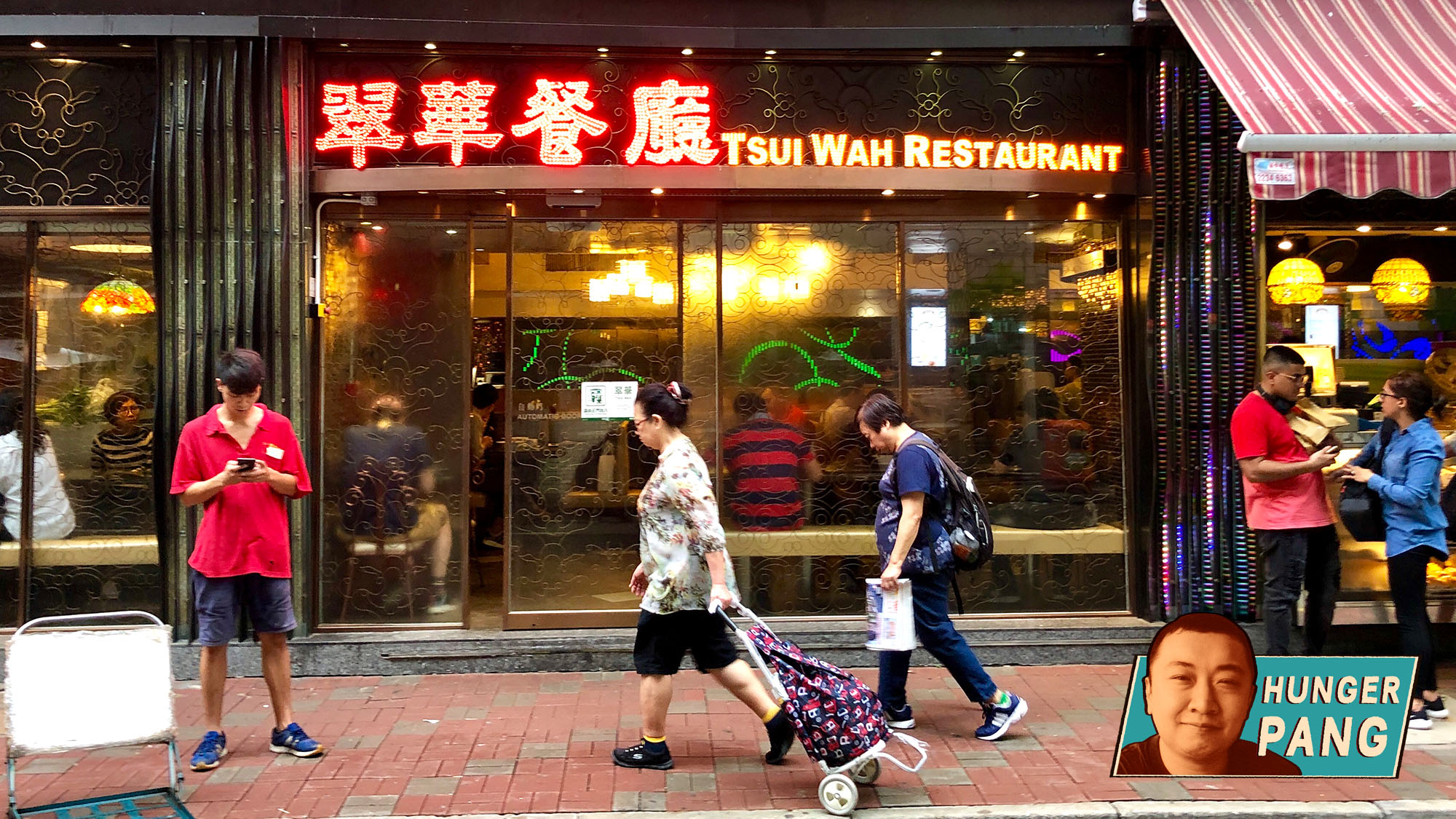A Brief Appreciation Of Tsui Wah, Hong Kong's Quintessential Restaurant
Tsui Wah restaurant can seemingly be found every fourth block in Hong Kong, or at least it feels that way. The Western analog, in terms of ubiquity, might be Denny's, but the food is leagues above that. In fact, if forced to pick one restaurant to capture the palate, resourcefulness, eclecticism, and general deliciousness of Hong Kong cooking, I'd direct visitors to Tsui Wah. And I'd suspect many of my Hong Kong friends would recommend the same.
Tsui Wah serves Cantonese diner food. As with Cantonese diners, the menu is a thick and laminated volume of many pages, chock full of beautiful photographs and described lovingly in Chinese, English, and Japanese. Check out the hype on the Malaysian beef brisket curry rice:

Very generally speaking, the components of a Chinese diner involve starch + protein + sauce, served in soup/stew/pan-fried form. Shredded pork and mushrooms perched on a nest of crispy fried noodles. A fried pork cutlet with Malaysian-style curry over rice. Crisp king prawns with XO sauce atop wok-fried noodles. They even do their interpretations of burger and hot dogs (nearly a foot long and topped with lettuce, tomatoes, and cucumbers, which I believe qualifies it as a sandwich). So to pin-point a location or style or feature of Tsui Wah dishes is futile; better to turn off the analytical part of the brain and approach it all as delicious. Because in my experience, it is.

Here is how my visits to Tsui Wah go every time: I first order a mug of Hong Kong-style milk tea. The Tsui Wah version directly inspired me to make milk tea every morning over coffee. I can't tell you which tea leaves are used here, but it's likely one of Ceylon, Assam, or Orange Pekoe, to which sugar and evaporated milk are added. Then, without fail, I'll order the Singapore-style Hainan Chicken Rice, perhaps Tsui Wah's signature dish.

To understand the allure of Hainan chicken rice, you must understand that chicken in Southeast Asia is vastly different from the commodity poultry you'll find in North America. My theory is the chicken in Southeast Asia is bred for flavor, and thus are small in comparison, while American chickens are bred for mass. There's a sweetness to the chicken meat here, with a thicker layer of skin, and it's poached in a way that makes the chicken pieces luscious and slippery. The skin bears the color of a brilliant yellow that looks like the saturation filter was dialed to 100.

The boneless, mostly dark meat-chicken comes with the requisite dipping sauces of Hainan chicken rice—a sweet and molassesy soy, and a tangy, ginger-forward dip that offers contrasting chicken experiences. Just as important is the accompanying rice, which isn't just steamed white. The rice served with Hainan chicken is cooked with chicken stock and fat, tinged with lemongrass for a whiff of herbaceousness. Good Hainan rice is slick but slightly sticky, allowing for chicken meat slices to rest atop a chopsticked-clump of rice and consumed in one bite. Tsui Wah doesn't serve the best version of Hainan chicken rice extant, but it's a damn fine one, and it's consistent enough among its 31 Hong Kong branches. When I last visited Hong Kong in 2015, Tsui Wah at the airport was my last meal before boarding back home to America; I even brought a takeout-container of Hainan chicken rice aboard the plane. Even if my seat neighbors weren't particularly pleased, I'm certain I'll do the same this time, too.
